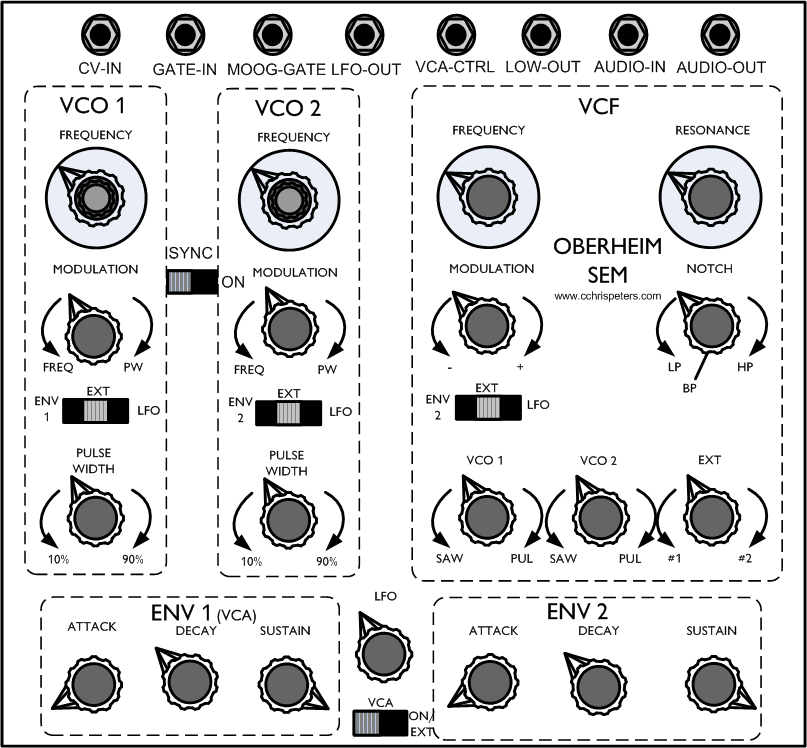Oberheim SEM |
Tom Oberheim was a former ARP dealer and saw the potential for a small add-on instrument that would expand the capabilities of the ARP 2600. The Synthesizer Expander Module or SEM he designed adds another complete synthesizer system called a "voice" to existing instruments equipped with the proper control voltage and gate connections.
The SEM's basic architecture is similar to that of the ARP Odyssey, but with many features absent. The SEM does not have a noise generator, sample & hold, or any keyboard auto repeat functions. Its low frequency oscillator outputs only a sine wave.
The SEM uses a multimode voltage controlled filter capable of low-pass, high-pass, band-pass and notch functions. The Oberheim filter was not designed to go into self oscillation like the ARP and Moog filters do.
Oberheim created a product line of standalone polyphonic semi-modular instruments building upon the SEM module. The Two Voice Synthesizer incorporates two SEMs, has a duo-phonic (plays two notes at a time) keyboard and often includes a simple analog step sequencer. The Four Voice incorporates four SEMs and is the first analog synthesizer to employ a digitally scanned keyboard which allows each module to be played separately and individually.
This approach to achieve polyphony was very different than the less expensive "top octave generator divide down" organ approach used by most other instrument manufacturers at the time. The Four Voice often includes a small programmer computer that can store certain (but not all) front panel SEM settings including oscillator frequency settings, filter frequency and resonance settings, modulation settings and envelope settings.
